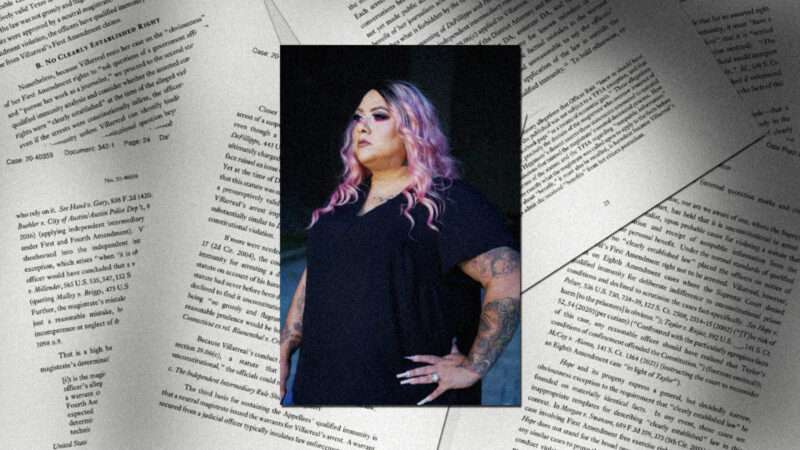Happy Tuesday! This week’s Rent Free includes:
- An Ohio Church countersues the city criminally charging its pastor with zoning violations.
- Vancouver, British Columbia, approves another indigenous-owned megaproject.
- A new report shows that America’s housing affordability problems are getting worse and spreading to more areas of the country.
But first, our lead story on the one California zoning reform that’s working out really well, and why all the others haven’t been nearly as productive.
Why Is California’s Building Boom Limited to ADUs?
California YIMBY, one of the OG YIMBY groups that advocate for zoning reform in California, has released a new report heralding the building boom kicked off by an accessory dwelling unit (ADU) reform.
Since the California Legislature got serious about eliminating local restrictions on granny flats, in-law suites, and the like in 2016, ADU production has increased by 15,000 percent. In 2022, they made up a quarter of California’s housing production, according to the report.
It’s truly a YIMBY success story. The sad fact is that it might be California’s only major YIMBY success story.
Since 2016, the California Legislature has passed dozens of bills that remove regulatory barriers to housing production. And since 2016, overall housing production has increased only modestly, according to permitting data from the state Department of Housing and Community Development (HCD). When ADUs are subtracted from the mix, permitting activity has more or less flatlined.
The state is permitting about as much housing today as it was in the 1990s, and much less than it was in the 1980s or early 2000s, according to U.S. Census Bureau numbers. (It is at least producing more than the recession-ravaged early 2010s.)
Meanwhile, indicators of the state’s housing shortage—including the ratio of rents and home prices to incomes, the percentage of cost-burdened households, measures of housing underproduction, and homelessness rates—are all flashing red.
So, what’s going on? Why haven’t other YIMBY housing laws kicked off a boom in new duplexes and transit-adjacent apartments as they have with ADUs?
I’d boil it down to two basic problems. Firstly, many YIMBY reforms have focused on handing down better bureaucratic mandates to local governments who have no interest in reforming their own housing laws. Secondly, the Legislature lards down what could be productive housing laws with endless interest group carveouts and handouts.
State Orders, Local Controls
On paper, California does have an elaborate, decades-old system requiring local governments to plan for more housing called Regional Housing Needs Assessment (RHNA).
The state hands down housing production goals to localities. Localities then produce plans called housing elements to meet those goals. Housing elements identify sites where new housing will be allowed, and outline the regulatory “constraints” on new construction localities will eliminate.
For a long time, RHNA was kind of a joke. A major focus of YIMBY reforms has been on improving the once-useless system.
New laws try to make state production goals reflect actual market demand, and ensure housing elements more realistically plan for growth. State bureaucrats more closely vet local housing elements. New state enforcement units are putting pressure on local governments to follow through with removing regulatory constraints.
The hope is that a souped-up RHNA will make all of California’s local governments more accommodating of new housing.
RHNA’s approach is premised on the idea that localities won’t do this on their own. The problem is even a souped-up RHNA still leaves them in the driver’s seat.
The state might review and certify housing elements, but localities are still the ones responsible for writing them, implementing them, and then approving individual housing projects. That leaves plenty of wiggle room for localities to loosen constraints on housing construction on paper while maintaining them in practice.
The state can theoretically strip localities out of “substantial compliance” with state housing law of state grants, force them to allow “builder’s remedy” projects, or even petition a court to rewrite their housing element.
For all the excitement about “builder’s remedy” projects, none have actually been approved. Local governments have proven pretty adept at blocking them or forcing the developer to settle for a smaller project.
Outside the few communities purposefully thumbing their nose at the state, there’s also a lot of legal uncertainty about when jurisdictions are actually out of “substantial compliance” with state housing law and thus subject to state remedies.
San Francisco was arguably still substantially compliant with state housing law last year when it was dragging its feet on passing reforms the state was telling the city it needed to adopt in order to meet its RHNA goals.
If the remedies for floating RHNA don’t clearly apply to San Francisco—the subject of a scathing state audit finding the city takes over three years to approve housing projects—that suggests even a reformed RHNA is kind of toothless.
Pork Barrels Full of Poison Pills
Even when the California Legislature does try to pass direct reforms forcing local governments to allow certain types of housing projects, interest group wrangling in the Legislature often ensures these bills don’t produce many new units.
New housing is a valuable thing. The groups that are in a position to say no to it aren’t keen on giving away their veto for free. As a result, state bills allowing builders to route around local zoning standards or skip environmental review end up getting loaded down with all sorts of carve-outs and poison pills.
To appease unions, state-streamlined projects have to pay union wages. To appease environmentalists, they have to be built to the highest green design standards. To appease tenant advocates, they can’t replace existing rental housing. To appease affordability advocates, they need to include money-losing affordable units. To appease NIMBYs, these projects can only go in certain areas and exceed local density caps by only so much.
At a certain point, all these special interest handouts end up eating up the value of whatever regulatory relief state law offers. When higher construction and financing costs are already putting serious headwinds on construction, these handouts are proving particularly fatal to new development.
What is to be done?
According to the California YIMBY report, ADU reform was a success because it set clear, permissive statewide standards that were binding on local governments and easy for builders to comply with.
The state should do that with all types of housing. Instead of relying on the “rickety and complicated conveyor belt” that is RHNA to hand down planning targets that local governments then try to skirt at the risk of potentially severe but legally uncertain penalties, the state could just tell local governments they have to approve certain types of housing.
And when the state does pass laws telling local governments to approve certain types of housing, those laws should come without a bunch of cost-increasing labor, affordability, and environmental provisions. Better yet, the state could directly permit housing projects without the need to trouble NIMBY local governments at all.
These are of course useless prescriptions in the same way that it’s kind of useless to say the way to lose weight is to diet and exercise. It’s no secret what the state’s problems are or what effective solutions would be.
Many YIMBY reforms keep underperforming because passing clean, effective reforms is politically impractical.
The California YIMBY report stresses that even with ADUs, housing reform is a process. It took over 30 years of marginal tweaks and fixes to get the state’s ADU laws working right. The same will likely be true for other YIMBY zoning reforms.
The trouble is that California doesn’t have 30 years to get housing policy right. Its problems are too immediate and too severe.
I’m not sure what could be done to speed up the process of reform.
Perhaps YIMBY lawmakers should gamble on politically riskier, but more impactful bills. Fewer will pass, but the ones that do will have a greater impact.
California also has a ballot initiative process that can allegedly be used to route around a special interest-captured legislature. YIMBYs haven’t really used it but they should. Offer up a ballot initiative legalizing 10-unit market-rate apartments on all residential land with no setbacks, parking requirements, impact fees, or prevailing wage mandates and see if voters go for it.
Maybe that won’t work, but the current pace of reform isn’t working either.
Ohio Church Sues City Criminally Charging Its Pastor for Zoning Violations
Last week at Rent Free we covered the case of Chris Avell, the pastor of Dad’s Place in Bryan, Ohio who’d been criminally charged with 18 violations of the city’s zoning code. The charges stem from Dad’s Place’s decision to stay open 24 hours a day and let people sleep in the church building.
In response, the church has filed a federal lawsuit against the city of Bryan and individual town officials. The church’s lawsuit argues that the city’s zoning crackdown violates the First Amendment’s religious liberty guarantees and federal law limiting the kinds of zoning restrictions states and localities can apply to churches.
Another Indigenous-Owned Mega-Project Approved in Vancouver
This week, the Vancouver City Council gave initial approval to the massive 13.5 million square foot, 13,000-unit Jericho Lands project. The development is being sponsored by MST Development Corporation, a for-profit consortium of the Musqueam Indian Band, Squamish Nation, and Tsleil-Waututh Nation.
It’s not the first indigenous-owned mega-project in the Vancouver area. The 6,000-unit Senakw project being built on Squamish reserve land has made headlines for its size and the fact its location on reserve land means it doesn’t have to comply with Vancouver’s zoning laws.
The Jericho Lands project, which will redevelop a former military base, did have to get the city’s approval. That didn’t end up being an obstacle.
New Report Shows America’s Housing Affordability Problems Widening, Deepening
A new report from Harvard’s Joint Center for Housing Studies finds that the median sale price for a single-family home was 5.6 times greater than the median income. That’s the highest ratio price-to-income ratio on record.
Coastal California remains the worst place for housing affordability, with almost all coastal metros posting price-to-income ratios above 10. Ratios nearly as high are popping up across the Mountain West, coastal Florida, and the mid-Atlantic.
This is a new development. “Price-to-income ratios that low were the norm across much of the country in prior decades. Indeed, fully two-thirds of large markets had price-to-income ratios below 3.0 as recently as 2000,” reads the report.
Quick Links
- Montgomery County, Maryland, is considering a proposal to let religious institutions build affordable housing on their land. A number of states and cities have passed similar “Yes In God’s Backyard” laws.
- Virginia might be the next state to replicate California’s ADU building boom. A bill in the Virginia Legislature would require localities to allow ADUs on residential land. Encouragingly, the bill forbids local parking requirements, high-impact fees, and separate utility hookups.
- Yet another church is coming under fire from local zoning officials for letting people sleep inside.
- The U.S. Supreme Court decided to not take up a challenge to a Seattle policy prohibiting landlords from checking rental applicants’s criminal history.
- St. Paul is considering further tweaks to its disastrous rent control policy.
- It turns out the real solution to high housing costs isn’t zoning reform, it’s purchasing land in the path of regular lava flows.
- Gainesville, Florida, is taking one step forward, one step back approach to housing affordability. Its city council is considering both minimum lot size reform (which would make starter homes easier to build) and an inclusionary zoning policy (which requires builders to include money-losing units in their projects.)
- “We really need to lean into property rights,” said Colorado Gov. Jared Polis to Colorado Public Radio on his approach to housing reform.
- Baltimore, Maryland, revives its inclusionary zoning law.
Regulation of the Week
Portland requires people to get tree permits when removing trees on their property as well as public “street trees” in the right-of-way. The city isn’t waiving this requirement for trees that have already been blown onto people’s homes by recent winter storms.
The post The 2 Reasons California's YIMBY Reforms Are Failing appeared first on Reason.com.
from Latest https://ift.tt/hbfjy6X
via IFTTT









